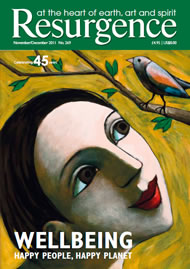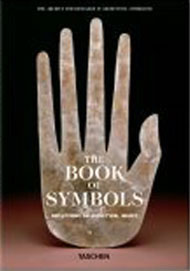Symbolic lexicons invariably fail to deliver. While some symbols have a more varied and rich history than others, reference guides to symbolism are somehow predicated on the opposite being true, choosing breadth of subject over the depth afforded to any given symbol.
The Book of Symbols, one of the most ambitious guides to symbolism ever attempted, is the result of a 14-year research odyssey editorially guided by members of The Archive for Research in Archetypal Symbolism (ARAS), which tries to avoid this superficiality by devoting a few hundred words to each of over 350 archetypal symbols, all illustrated by hundreds of images from various arts spanning many centuries and dozens of cultures.
This almost monastic undertaking agglomerates a stupendous amount of references. From the Vampire to the colour Orange, from the Siren to Sewing, the Shipwreck to Menstruation, the Umbrella to the Unicorn, there is enough here to make this the most engrossing general guide to symbolism just published.
It is a shame that the introduction lacks a solid explanation of the book’s raison d’être, or any explanation of what distinguishes these archetypal symbols from traditional symbols or how they are relevant in the way that traditional symbols are not. My feeling is that a little background on the theory would have not gone amiss. And whilst the word ‘metaphor’ never actually appears, this is essentially a guide to precisely that.
Traditional symbols as emblems of beliefs and identity can be catalysts of great passion, and some nations will even go as far as legislating against desecration of their national symbols. Many online forums are presenting extensive exploration of the origins and meaning of ancient and modern symbols, and new studies show how recognition of commercial symbols has started to supplant that of ancient symbols.
All this tells us that values intrinsic to the collective human outlook are undergoing a seismic shift in the minds of hundreds of millions, the effects of which are already being noticed. Indeed, this ongoing battle for the high ground of the human subconscious validates ARAS’s efforts; and by presenting multifarious definitions of each symbol, the authors are tapping into what makes symbolism such an interesting and mysterious aspect of what it means to be human. Existing alongside us in ‘lifespans’ that flourish and wither, embodying facets akin to ‘personalities’, symbols are in some senses alive, and this is discernible in The Book of Symbols.
A work this ambitious cannot avoid questionable omissions: for example, a whole class of geometric symbols – some of the most ancient archetypal symbols known – are omitted, and the entire panoply of folk art, which has especially strong roots from the Caucasus right across to the Baltic States (as evinced by carved and painted handicrafts), escapes attention entirely, as do some important archetypes brought forth by esoteric traditions and recognised by Jung.
Are the Subway and the Telephone (both entered) really more representative of the archetypal than the (absent) Fool or Outsider (folk dances, the Tarot, Edgar in King Lear…) or the Hexagram? Why no entry for Journey or Quest, yet another prime archetype? Can these oversights be viewed as a reflection of the workaday experience of the Manhattan-based editors of ARAS?
Also, in isolating each symbol by not being able to cross-reference with those of similar origins or meanings, the authors miss a golden opportunity for a more fluid, free-associative read that would complement the work’s poetic nature.
As it is, the succinct essays brim with information that will especially appeal to those whose inspiration needs spicing up, or who are interested in dream interpretation, aspects of the psyche, art or mythology. This sincere and scintillatingly illustrated attempt to render the human subconscious visible illuminates immense fields of inner life, whilst not quite escaping the predilections of its authors.








